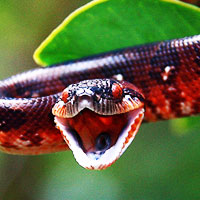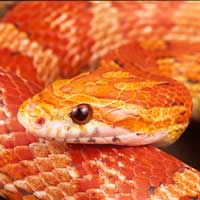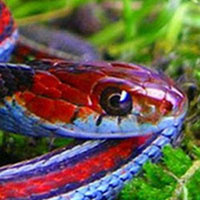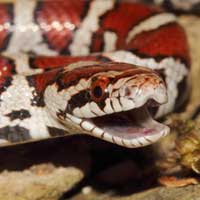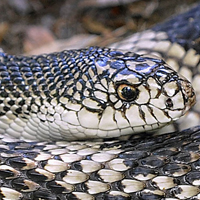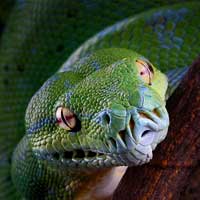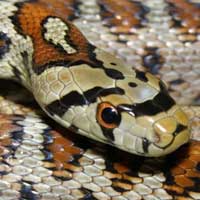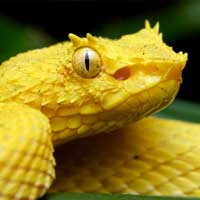Speckled Kingsnake: Everything You Need to Know About This Unique Reptile
The scientific name of the Speckled Kingsnake is Lampropeltis holbrooki. It belongs to the Colubridae family, which encompasses a wide variety of non-venomous and mildly venomous snakes.
Scientific Name: Lampropeltis holbrooki
Snake Family: Colubridae
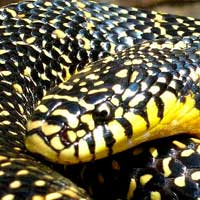
Introduction to the Speckled Kingsnake
The Speckled Kingsnake (Lampropeltis holbrooki) is a striking, non-venomous snake known for its glossy black body adorned with yellow or white speckles. Native to the central and southeastern United States, this species is often referred to as the "salt-and-pepper snake" due to its unique appearance. It is a hardy and adaptable predator, making it a favorite among reptile enthusiasts and a vital part of its ecosystem.
Where Does the Speckled Kingsnake Live?
The Speckled Kingsnake thrives in a variety of habitats, showcasing its adaptability to different environments. From wetlands to forests, this species is highly versatile.
Preferred Habitat Features:
- Wetlands and swamps
- Forests and woodlands
- Grasslands and prairies
- Suburban areas with access to water sources
| Region | Habitat Type | Key Features |
|---|---|---|
| Central USA | Wetlands | Moist soils, abundant prey |
| Southeastern USA | Woodlands | Shaded areas, dense vegetation |
| Midwestern USA | Grasslands | Open fields with shelter |
What Does the Speckled Kingsnake Eat?
The Speckled Kingsnake is a carnivorous predator with a varied diet. Its opportunistic feeding habits allow it to thrive in diverse environments.
Common Diet:
- Rodents such as mice and small rats
- Lizards and amphibians
- Birds and their eggs
- Other snakes, including venomous species
In captivity, feeding frozen-thawed rodents is the most practical and safe option. Juveniles should be fed every 5-7 days, while adults can be fed every 10-14 days. Ensure the prey size is appropriate to prevent health issues.
Behavior and Temperament of the Speckled Kingsnake
The Speckled Kingsnake is known for its calm demeanor and adaptability, making it a popular choice among reptile keepers. While it may display defensive behaviors when threatened, it is generally easy to handle.
Key Behavioral Traits:
- Non-aggressive and docile
- Active during the day and early evening
- May vibrate its tail or musk when startled
- Highly inquisitive and exploratory
With consistent, gentle handling, the Speckled Kingsnake can become a docile and interactive pet.
Health and Lifespan of the Speckled Kingsnake
The Speckled Kingsnake is a robust species with a lifespan of 15-20 years in captivity when provided with proper care. Regular monitoring of its health and environment is essential to its well-being.
Common Health Concerns:
- Respiratory infections caused by improper humidity
- Shedding issues due to low humidity
- Parasites, especially in wild-caught specimens
Maintain a temperature gradient of 75-85°F, provide fresh water for hydration and soaking, and ensure a clean enclosure to prevent health problems. Regular check-ups with a reptile veterinarian are recommended.
Reproductive Traits of the Speckled Kingsnake
The Speckled Kingsnake is oviparous, laying eggs after mating. Reproduction typically occurs in the spring, with females laying eggs in early summer.
Reproductive Details:
- Mating season: Spring
- Clutch size: 6-18 eggs
- Incubation period: 50-70 days
- Hatchlings are independent at birth
In captivity, providing a nesting box and maintaining proper incubation temperatures (82-85°F) are crucial for successful breeding.
How to Handle and Care for the Speckled Kingsnake
Caring for the Speckled Kingsnake involves creating a secure and comfortable habitat while providing regular, gentle handling.
Handling and Care Tips:
- Handle regularly and gently to build trust
- Provide an enclosure with hiding spots and climbing branches
- Maintain appropriate humidity and temperature levels
- Offer a varied diet of appropriately sized prey
With proper care, the Speckled Kingsnake can thrive in captivity, offering years of enjoyment and fascination to its keeper.
